Search Results
Fine Jewelry University Articles matching: “Ring mount”
Showing only FJU Article results. Click here to show all results.
Fine Jewelry University (Show All FJU Articles)
-
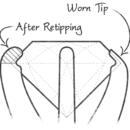
Jewelry Repair FAQ
…these prongs can become worn down. If the prongs wear down too much, the stone becomes at risk of falling out of the mounting. Retipping is the process of adding a small amount of metal (usually gold or platinum) to the top of worn down … to adhere those molecules to the jewelry’s surface. Molecules are the key to understanding gold plating. The amount of gold used is on the molecular level. This means that only a very thin layer of gold covers the surface. Gold plating …
-
Frequently Asked Question about Jewelry
… Laboratory describing a Loose Diamond. The laboratory will not issue certificates on Diamonds which are set in a mounting. A Diamond Certificate issues a “grade” indicating the physical properties of the Diamond “at the time of evaluation…assuming the Diamond does not chip or is not otherwise altered. An appraisal can be performed on a loose Diamond, a mounted stone, or jewelry. If the stone is not loose, the physical properties are estimated using various estimation …
-
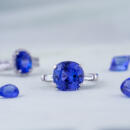
Gem in the Spotlight: Tanzanite
… the violetish blue color pop (although technically speaking it doesn’t make it more blue, just less green). The amount of blue in a tanzanite is caused by the quantity of vanadium present. Raw, unheated tanzanite is sometimes marketed as… index of 1.69-1.70. History and Lore of Tanzanite Tanzanite was originally discovered in 1967 in Tanzania, near Mount Kilimanjaro, by a Maasai tribesman named Ali Juuyawatu, although the credit often goes to an Indian prospector named …
-
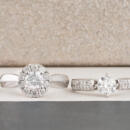
Anatomy of a Ring
Knowing the different parts of a ring can help you make a better decision when choosing a new ring and it can help you know when your ring may need … ring has a shank. This is the technical term for the band of metal that encircles the finger. There would be no ring without the shank. If the ring has a distinct design feature on the top part, the ring shank is generally said to start … point that the design stops. A jeweler will usually add or remove metal from the bottom of the shank when sizing a ring. This can sometimes be done so well that you would never know it was sized looking at the shank with your naked eye. …
-

Gem in the Spotlight: Alexandrite
…Stunning color change on a natural alexandrite. Alexandrite History and Lore Alexandrite was first found in the Ural Mountains in Russia in the 1830s. When it was first discovered by a Finnish mineralogist, he mistook it for emerald … is still being mined today in Sri Lanka and Brazil, very few compare to the quality of those found in the Ural Mountains. While alexandrite doesn’t have a several thousand-year-old history like ruby, it quickly took the world by storm. …
-
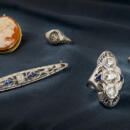
How to Value Inherited Jewelry
…, is a “caveat emptor” or “buyer beware” area of life. How a small polished rock can be worth the same amount as a car or a house will never be understood by some people. A big reason for this is that evaluating jewelry and arriving at an …their offer can be significantly lower than even the intrinsic value of a piece. We have even heard of cases where a ring with a one carat diamond and $50 in scrap gold was valued at $50 by these operations. The intrinsic values for the …
-
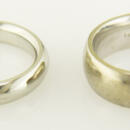
The Difference Between White Gold and Platinum
… white color is achieved by a careful choice of the alloying metals, which bleach the deep yellow of pure gold. The amount of alloy mixed with gold is called its karat. The key to understanding gold karat is the karat value over 24. An … because if you don’t like the light yellow look of a specific manufacture, then don’t buy it. New white gold rings are usually coated with a hard protective finish of rhodium, a silver-white metal like platinum. The rhodium plating is …
-
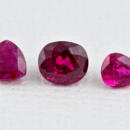
Gem in the Spotlight: Ruby
…ss of 10) and moissanite (which is in between). Rubies only occur in the color red which comes from trace amounts of chromium in the crystal structure. If they are too purple or too pink, they are called purple sapphires or pink sapphires,… believed to protect the wearer from injury and to keep them safe and healthy. Many cultures believed that wearing rubies in battle made warriors invincible and protected them from harm. Innumerable powers have been associated with the …
-
Synthetic Gems: The Whole Story
… rubies, sapphires and emeralds. These gems in high quality have put ownership beyond most people to justify the price. Just a one carat gem could cost $3,000 and more. Most of the time people don’t wear them as an engagement ring where people can spend over $10,000 routinely. The answer was to find a less expensive way to have these gems. It took over a hundred years and millions of dollars of research to create what nature can produce. Man made gems come in many forms…